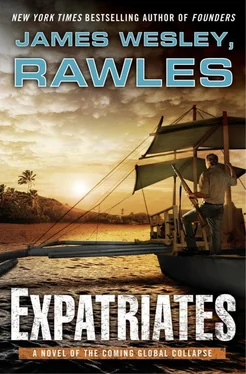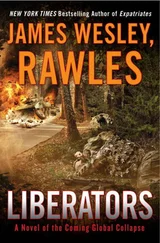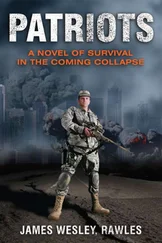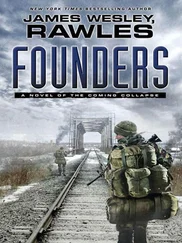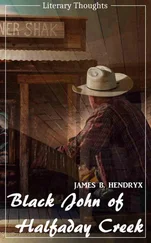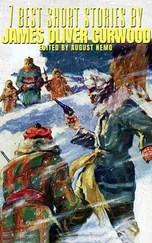Continuing his vigil on Tuesday, he was excited to see an unusually large number of vehicles arriving in front of the headquarters and dropping off passengers. It was obvious that there was a high-level meeting about to start. After 12:50 P.M., there were no more arriving vehicles. At 1:04 P.M., Quentin hit the A/C ON button. Although they didn’t look dramatic from his vantage point, the results were devastating.
The simultaneous explosions roared and a cloud of dust rose from the roof of the headquarters building. He saw the windows shatter and paper floated down like confetti. But the sprinklers worked as designed, and immediately prevented any fires from spreading and burning down the building. Quentin stayed and watched the whole show. By the number of stretchers carried out to military ambulances, he presumed that there were at least sixty casualties. It wasn’t until two months later that he learned there were eighty-two WIAs and sixty-two KIAs, including six field-grade officers. The commanding general was missed only because he was late arriving at the staff meeting. Quentin Whittle’s decapitation of the Indonesian invasion command structure resulted in confusion, hesitation, and what turned into indefinite delays in their forces advancing south to the 24th parallel. The decisive hit, however, was not enough to completely stop the invasion from advancing.
• • •
The Big Push began. The Indo-Malaysian army had already been stopped twelve miles north of Port Hedland in the west, forty-five miles north of Alice Springs in the center of the country, and eighteen miles north of Townsville in the east.
Holding fast to their front lines on the coasts, the Australian Army shifted and advanced into the Northern Territory on three main axes of advance: west from the town of Mount Isa, north from Alice Springs, and east from Port Hedland.
Assuming that the Aussie Army would avoid the major highways and attempt to cross the Tanami Desert via the Tanami Road, the Indos had positioned a large portion of their ground forces south of Halls Creek, expecting an epic ground battle. Instead, they were outmaneuvered before they could even react.
In the end, the combined Indonesian and Malaysian armies proved to be too poorly trained to stand up to the Australians, despite their larger numbers. It was the Australian Army’s artillery that proved to be the decisive blow. Light spotter planes, flown by both RAAF pilots and CAAAF Reserve pilots radioed in the locations of Indonesian and Malaysian vehicles and troop concentrations. If artillery wasn’t already within range for an immediate barrage, it often could be relocated within a few hours to inflict devastating strikes. Then, per their modern doctrine, the artillery units would quickly displace, leaving the Indonesians wondering from whence the fire had originated. The Indonesians lacked counterbattery radars.
Indonesian aircraft dispatched to spot the Aussie forces quickly fell prey to the Australian’s ground-based air defenses. Left blind, the Indos maneuvered ineffectively, and most units were cut off and were then handled piecemeal. Their large force at the edge of the Tanami Desert was isolated and attrited by both artillery fire and by CAAAF pilots flying private planes packed with explosives in suicide attacks.
The only major battle of the war took place at the edge of the Barkly Tableland, between the towns of Katherine and Tennant Creek. This three-day conflict resulted in a horrific loss of life. The final tally was 22,800 Indonesian KIAs, 1,850 Malaysian KIAs, and 15,812 Australian KIAs. And 307 of the invaders’ vehicles were also destroyed. Most of the Australian casualties were Australian Army Reserve unit members. More than 20,000 Indonesian and Malaysians were taken prisoner and 151 vehicles were captured intact. The Battle of Tennant Creek (as it was later known) broke the will of the Indonesians in the ground war. The Australian press described this as “the only real knock-down, drag-out fight” between the two armies. The Indos started their peace overtures the following week via HF radio.
In the end, Caleb’s two remaining FLBs became just a minor footnote in the history of the conflict. They did, however, provide some badly needed fuel and replenishment of ammunition as the army advanced. With the FLBs in place, a portion of the army was able to press on to attack the Indonesians without having to wait for their logistics “tail” to catch up with them as they normally would.
• • •
The cease-fire and withdrawal of the invasion forces was facilitated by the holding of 536 Australian civilians hostage in Papua New Guinea and forty-six in East Timor. Some of these hostages were from the Australian mainland and forced to board ships as the Indos started their withdrawal. The Indonesians made a show of calling them “guests of the peace-loving Indonesian government,” but they made it clear that they would not be released until every Indonesian and Malaysian POW was released and repatriated. Video footage of the Australian hostages was shown endlessly on ABC television. In the end, the Indos got their way. But the Australian prime minister made it clear that because hostages were used, normalization of relations between the two nations would be delayed for a decade or more, even if the agreed reparations were paid in full, in gold bullion.
Refugees began to return to their homes in the Northern Territory even before the bilateral cease-fire was formally announced. As news of the Indonesian withdrawal from each city became public, long convoys of refugees’ vehicles returned. They found that some towns had hardly been touched while others had suffered widespread destruction at the hands of the retreating Indo troops.
Following the return of the refugees to the Top End, there was a huge quantity of captured Indonesian and Malaysian materiel. Mountains of Indonesian military Composite Rations (similar to CR1M rations) mysteriously hit the civilian market. The Northern Territory newspapers had many stories about civilians attempting to register captured vehicles with the Department of Transport’s Motor Vehicle Registry (MVR). This caused a huge row in the editorial pages. The large number of captured firearms created an even larger uproar as people debated the legality of civilians possessing these weapons. Some called for reinstating the ban on civilian-owned semiautomatics, while the majority—and an overwhelming majority in the Northern Territory and Western Australia—thought a renewed ban would be ridiculous. In the end, a general consensus developed that Australia needed a well-armed citizenry to help defend against invading armies. One newspaper editorial summed up the decision with the pointed headline: WHAT IF CHINA COMES NEXT TIME?
“All you need for happiness is a good gun, a good horse, and a good wife.”
—Daniel Boone
7th Combat Service Support Battalion (CSSB) Forward Headquarters, Robertson Barracks, Palmerston, Northern Territory, Australia—April, the Third Year
Chuck tapped on the brigade commander’s door. After Colonel Reynolds shouted, “Enter!” Chuck stepped into the office and found the colonel tapping away at his laptop keyboard. Looking up, he smiled and said, “Good to see you, Nolan. Do shut the door.”
After Chuck had closed the door behind him, Reynolds flipped the laptop screen closed and said, “How are things getting along with your Inventory, Destruction, and Safe Storage project? We’ve been hearing the explosions from quite a distance.”
“It’s all gone quite well. It was my pleasure to stay on for an extra couple of weeks to see it all wrapped up. The dugout space for the captured artillery rounds and other explosives was limited, so we had to be selective about what we destroyed, what we sold, and what we put into storage. Much of it had no commonality with our logistics and no civilian use, so that material was burned in place, or for any contained explosives—like artillery rounds and mortar bombs—blown in place.”
Читать дальше
